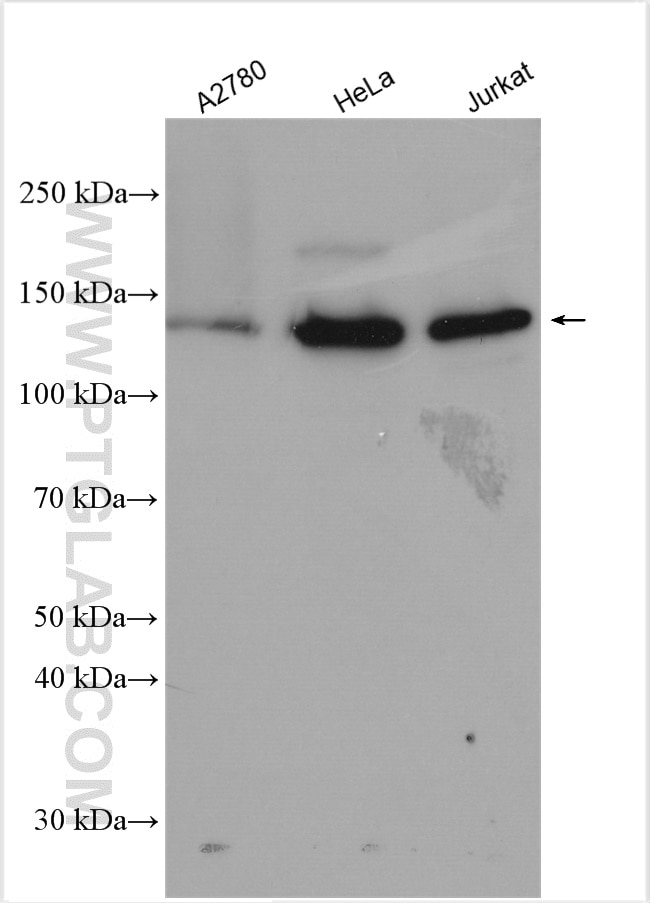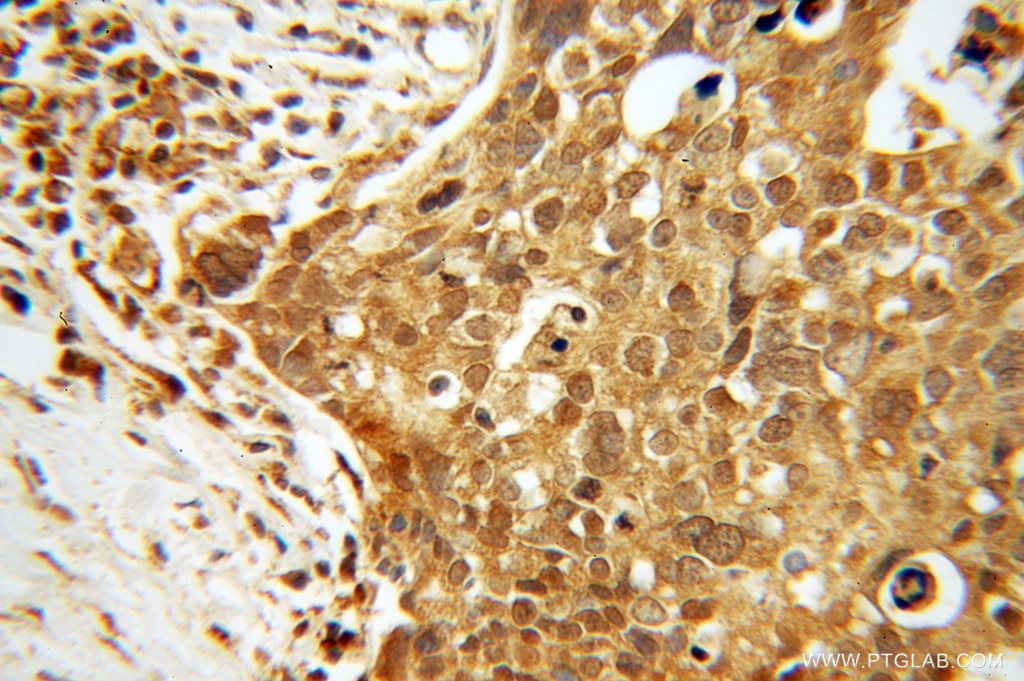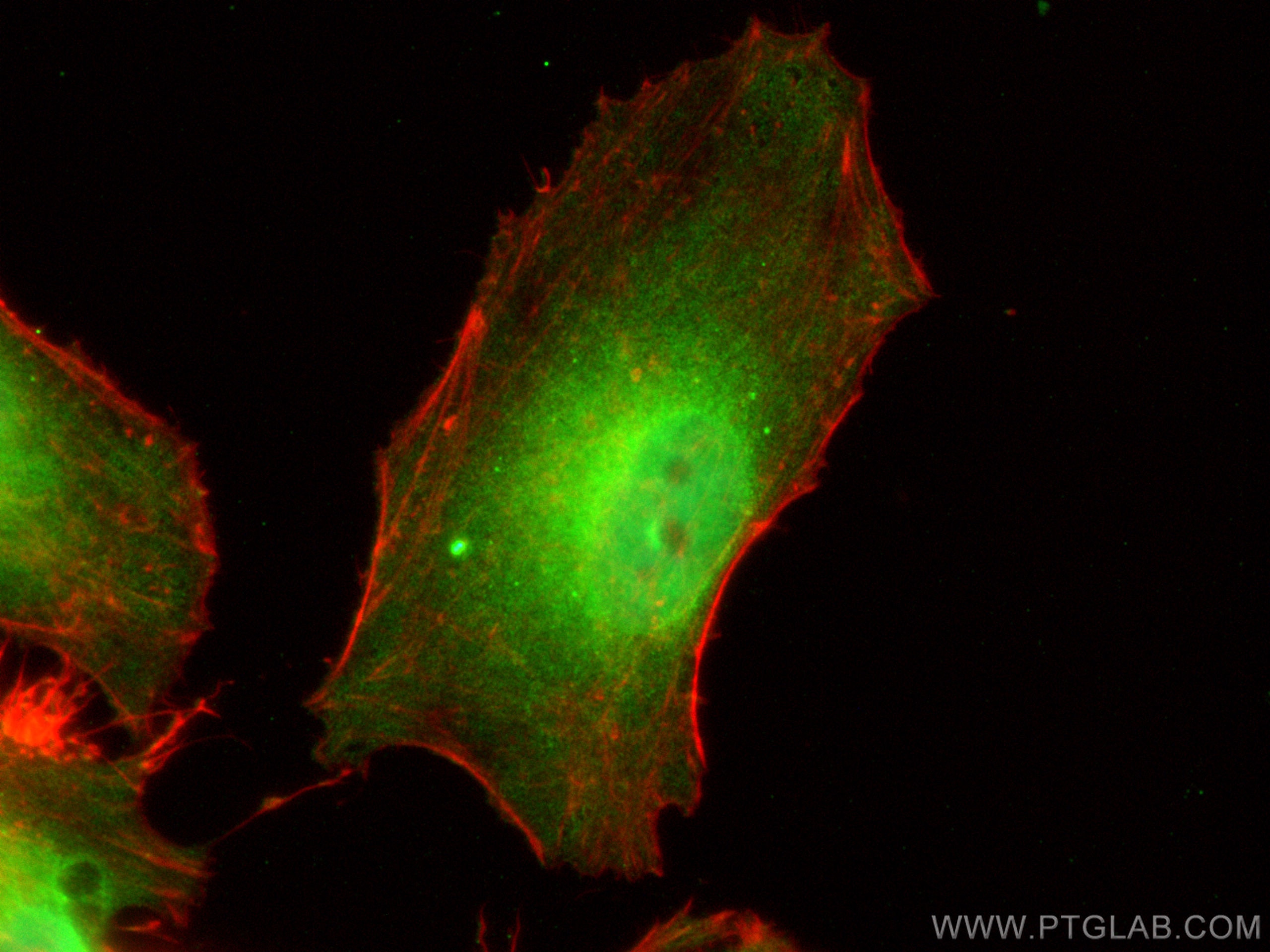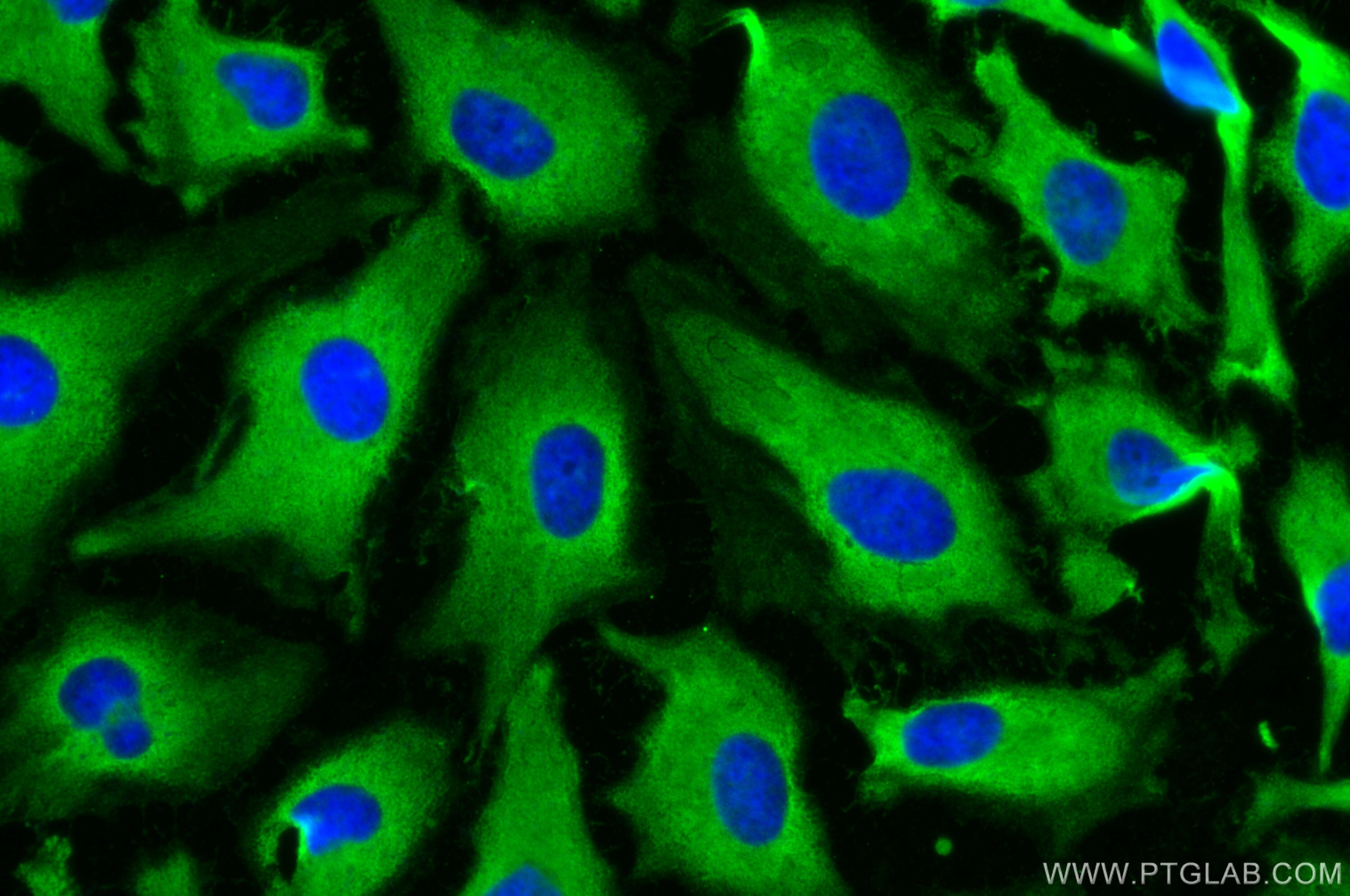Anticorps Polyclonal de lapin anti-TTF2
TTF2 Polyclonal Antibody for WB, IHC, IF/ICC, IP, ELISA
Hôte / Isotype
Lapin / IgG
Réactivité testée
Humain, rat, souris
Applications
WB, IHC, IF/ICC, IP, ELISA
Conjugaison
Non conjugué
N° de cat : 13722-1-AP
Synonymes
Galerie de données de validation
Applications testées
| Résultats positifs en WB | cellules A2780, cellules HeLa, cellules Jurkat |
| Résultats positifs en IP | cellules A2780 |
| Résultats positifs en IHC | tissu de tumeur ovarienne humain il est suggéré de démasquer l'antigène avec un tampon de TE buffer pH 9.0; (*) À défaut, 'le démasquage de l'antigène peut être 'effectué avec un tampon citrate pH 6,0. |
| Résultats positifs en IF/ICC | cellules HeLa, |
Dilution recommandée
| Application | Dilution |
|---|---|
| Western Blot (WB) | WB : 1:2000-1:10000 |
| Immunoprécipitation (IP) | IP : 0.5-4.0 ug for 1.0-3.0 mg of total protein lysate |
| Immunohistochimie (IHC) | IHC : 1:20-1:200 |
| Immunofluorescence (IF)/ICC | IF/ICC : 1:200-1:800 |
| It is recommended that this reagent should be titrated in each testing system to obtain optimal results. | |
| Sample-dependent, check data in validation data gallery | |
Applications publiées
| WB | See 2 publications below |
| IHC | See 1 publications below |
Informations sur le produit
13722-1-AP cible TTF2 dans les applications de WB, IHC, IF/ICC, IP, ELISA et montre une réactivité avec des échantillons Humain, rat, souris
| Réactivité | Humain, rat, souris |
| Réactivité citée | rat, Humain |
| Hôte / Isotype | Lapin / IgG |
| Clonalité | Polyclonal |
| Type | Anticorps |
| Immunogène | TTF2 Protéine recombinante Ag4671 |
| Nom complet | transcription termination factor, RNA polymerase II |
| Masse moléculaire calculée | 1162 aa, 129 kDa |
| Poids moléculaire observé | 130 kDa |
| Numéro d’acquisition GenBank | BC030058 |
| Symbole du gène | TTF2 |
| Identification du gène (NCBI) | 8458 |
| Conjugaison | Non conjugué |
| Forme | Liquide |
| Méthode de purification | Purification par affinité contre l'antigène |
| Tampon de stockage | PBS with 0.02% sodium azide and 50% glycerol |
| Conditions de stockage | Stocker à -20°C. Stable pendant un an après l'expédition. L'aliquotage n'est pas nécessaire pour le stockage à -20oC Les 20ul contiennent 0,1% de BSA. |
Informations générales
Transcription elongation is an key target for control of eukaryotic gene expression. After initiating from a promoter, the RNA polymerase II elongation complex is subjected to a block to elongation by the action of components of N-TEF (negative transcription elongation factor) [PMID: 9748214]. Transcription termination factor 2 (TTF2) is a DsDNA-dependent ATPase that acts as a transcription termination factor by coupling ATP hydrolysis with removal of RNA polymerase II from the DNA template. It also contribute to mitotic transcription repression, and involved in pre-mRNA splicing[PMID:15125840, 12927788].
Protocole
| Product Specific Protocols | |
|---|---|
| WB protocol for TTF2 antibody 13722-1-AP | Download protocol |
| IHC protocol for TTF2 antibody 13722-1-AP | Download protocol |
| IF protocol for TTF2 antibody 13722-1-AP | Download protocol |
| IP protocol for TTF2 antibody 13722-1-AP | Download protocol |
| Standard Protocols | |
|---|---|
| Click here to view our Standard Protocols |
Publications
| Species | Application | Title |
|---|---|---|
Mol Cell mRNA decapping factors and the exonuclease Xrn2 function in widespread premature termination of RNA polymerase II transcription. | ||
Sci Total Environ PKCα mediated by the PI3K/Akt-FOXA1 cascade facilitates cypermethrin-induced hyperthyroidism. | ||
Nat Commun Single-cell analysis of gastric signet ring cell carcinoma reveals cytological and immune microenvironment features |









